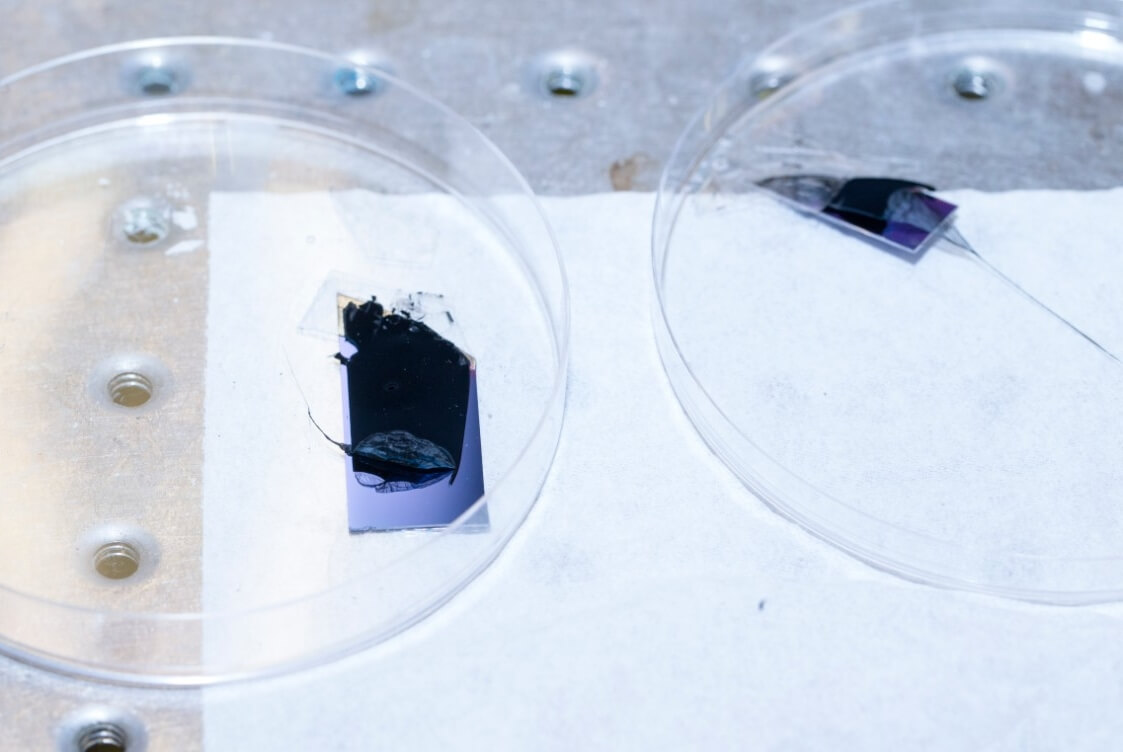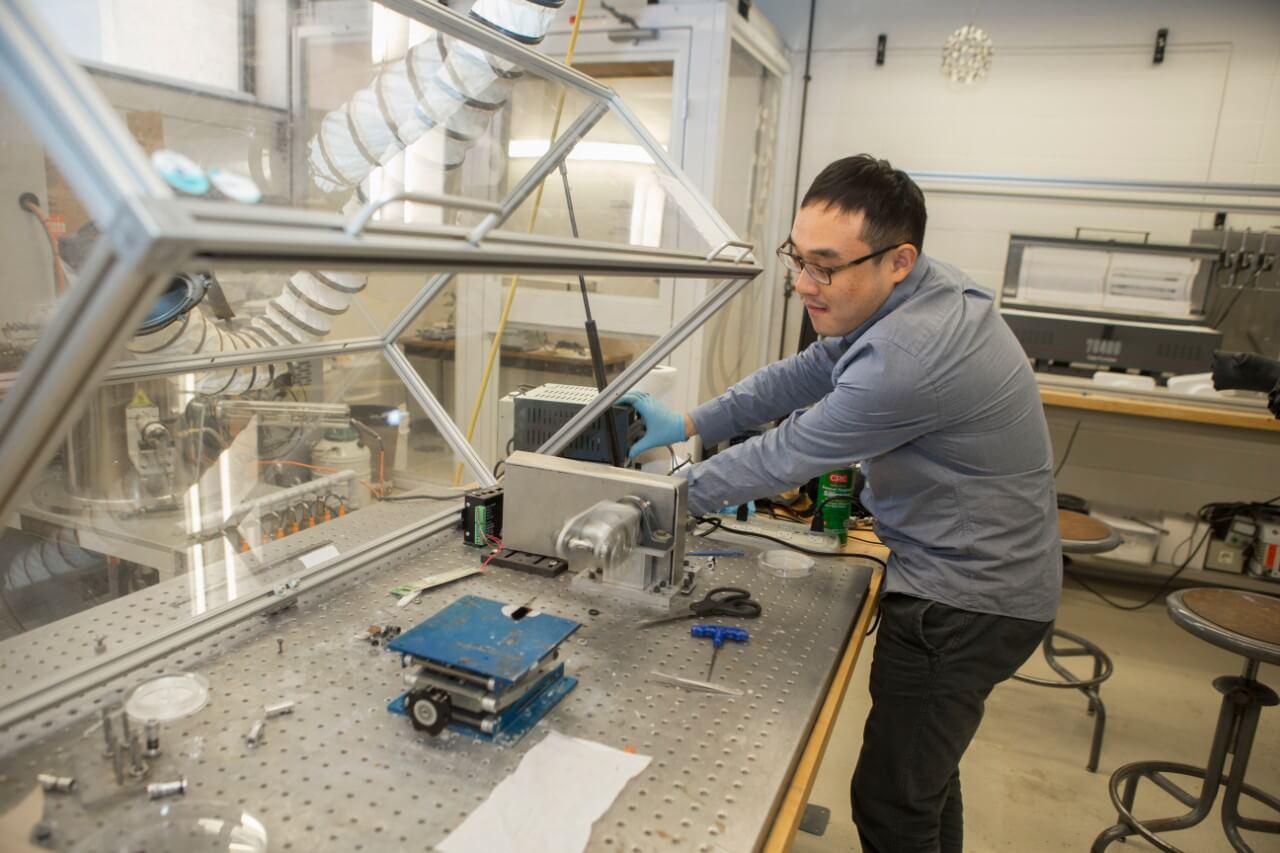In the near future, carbon is expected to replace metals in many applications of manufacturing goods. It could even be used to develop smart clothing capable of charging a cell phone.
To prepare for a carbon renaissance, engineers at the Nanoworld Laboratories at the University of Cincinnati (UC) have partnered with Wright-Patterson Air Force Base (WPAFB) to improve the properties of carbon nanotube assemblage.
“Carbon-based materials in the future are expected to replace heavy and expensive metal-based materials in applications,” said Vesselin Shanov, professor of chemical and materials engineering at UC and co-director of the Nanoworld Lab.
Carbon nanotubes are only one-sixth as heavy as steel and over 100 times stronger. They have many electronic, mechanical and magnetic properties, making them broadly applicable in manufacturing.
Carbon nanotubes will be used to replace copper wire in planes and cars, to filter water, to develop biometric sensors that can tell people about their bodies, and much more.
“In the past, metals dominated manufacturing goods,” Mark Schulz, a professor of mechanical engineering at UC and co-director of the Nanoworld Lab, said in a statement.
“But I think carbon is going to replace metals in a lot of applications. There’s going to be a new carbon era — a carbon revolution.”
But before carbon can effectively replace metals in manufacturing, much research is needed.
Now, the 30 graduate and undergraduate students at the Nanoworld Lab are reaping the benefits of the state-of-the-art facilities at WPAFB.
“We believe that thanks to the existing synergy between the partnering institutions, new fundamental knowledge will be generated regarding synthesis, characterization and application of carbon nanotube and graphene,” said Shanov.
Because of the partnership, the needed research is underway.
The research
Mark Haase, a graduate student at UC, has spent the past year using the sophisticated equipment at the WPAFB research lab to explore the applications for carbon nanotubes. He uses the equipment to help his classmates as well.
“This pushes us to work in groups and to specialize. These are the same dynamics we see in corporate research and industry,” Haase said in a statement. “Engineering is a group activity these days so we can take advantage of that.”
The UC researchers create nanotubes by putting them on quarter-sized silicon wafers and heating them in a vacuum chamber, a process called chemical vapor deposition.

“Each particle has a nucleation point. Colloquially, we can call it a seed,” Haase said in a statement.
“Our carbon-containing gas is introduced into the reactor. When the carbon gas interacts with our ‘seed,’ it breaks down and re-forms on the surface. We let it grow until it reaches the size we want,” he continued.
At UC, researchers have been creating carbon nanotubes for a long time.
In 2007, the Nanoworld Lab set a world record by growing a 2-centimeter-long nanotube, the largest of its time. But now, the researchers can create ones that are much longer.
They take pride in their abilities, and can create nanotubes from almost any carbon, including alcohol and methane.
“I remember one group showed off by using Girl Scout cookies. If it contains carbon, you can turn it into a nanotube,” Haase said in a statement.
To make the large carbon nanotubes, they stretch it over a spool in the lab to create a spun thread that can be woven into textiles.

“It’s exactly like a textile,” Shanov said in a statement. “We can assemble them like a machine thread and use them in applications ranging from sensors to track heavy metals in water or energy storage devices, including super capacitors and batteries.”

Applications
One of the major benefits of carbon is that it’s lightweight.
For the military, carbon nanotubes could replace the need for heavy batteries that charge the lights, night-vision tools and communication gear.
“As much as one-third of the weight they carry is just batteries to power all of their equipment,” Haase said in a statement. “So even if we can shave a little off that, it’s a big advantage for them in the field.”
In the medical field, the researchers are studying how carbon nanotubes could help deliver medicine.
Researchers may be able to add a protein molecule to the outside of the nanotube to bait the cells into consuming the medicine.
What’s next?
There are two issues currently surrounding carbon nanotube applications that the researchers are working to overcome.
First, researchers want to make sure that the carbon nanotubes are nontoxic. Past research has shown a correlation between carbon exposure and lung damage similar to asbestos.
Second, as of now, the researchers are having trouble with mass production of carbon nanotube thread.
But that is expected to change with time.
For now, the researchers can only produce 50 yards of carbon nanothread at a time.
“There is still a lot of work to be done in scaling up the process,” Benji Maruyama, the leader of the Materials and Manufacturing Directorate at the Air Force Research Laboratory, said in a statement.
“Pulling a carbon nanotube fiber off a silicon disk is good for lab-scale research but not for making an airplane wing or flight suit.”
Despite the current roadblocks, carbon-based materials are expected to soon replace expensive, heavy metal materials.
“The joint research is helping to achieve this goal,” said Shanov.



